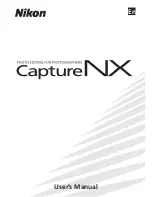
Appendix B. Introduction to Public-Key Cryptography
488
a recommended practice to encrypt sensitive data, however, because it means that anyone with
the public key, which is by definition published, could decrypt the data. Nevertheless, private-key
encryption is useful because it means the private key can be used to sign data with a digital signature,
an important requirement for electronic commerce and other commercial applications of cryptography.
Client software such as Mozilla Firefox can then use the public key to confirm that the message was
signed with the appropriate private key and that it has not been tampered with since being signed.
Section B.3, “Digital Signatures”
illustrates how this confirmation process works.
B.2.3. Key Length and Encryption Strength
The strength of encryption is related to the difficulty of discovering the key, which depends on the
cipher used and the length of the key. For example, the difficulty of discovering the key for the RSA
cipher depends on the difficulty of factoring large numbers, a well-known mathematical problem.
Encryption strength is often described in terms of the size of the keys used to perform the encryption:
longer keys provide stronger encryption. Key length is measured in bits. For example, 128-bit keys
with the RC4 symmetric-key cipher supported by SSL provide significantly better cryptographic
protection than 40-bit keys used with the same cipher. The 128-bit RC4 encryption is 3 x 10^26 times
stronger than 40-bit RC4 encryption. For more information about RC4 and other ciphers used with
SSL, see
Section 1.4.10, “SSL/TLS and Supported Cipher Suites”
.
Different ciphers may require different key lengths to achieve the same level of encryption strength.
The RSA cipher can use only a subset of all possible values for a key of a given length, due to the
nature of the mathematical problem on which it is based. Other ciphers, such as those used for
symmetric-key encryption, can use all possible values for a key of a given length. Thus, a 128-bit key
with a symmetric-key encryption cipher provides stronger encryption than a 128-bit key with the RSA
public-key encryption cipher. This difference explains why the RSA public-key encryption cipher must
use a 512-bit key or longer to be considered cryptographically strong, when symmetric-key ciphers
can achieve the same level of strength with a 64-bit key.
B.3. Digital Signatures
Encryption and decryption address the problem of eavesdropping, but encryption and decryption, by
themselves, do not address the two other problems: tampering and impersonation.
Tamper detection relies on a mathematical function called a
one-way hash
(also called a
message
digest
). A one-way hash is a number of fixed length with the following characteristics:
• The value of the hash is unique for the hashed data. Any change in the data, even deleting or
altering a single character, results in a different value.
• The content of the hashed data cannot be deduced from the hash.
As mentioned in
Section B.2.2, “Public-Key Encryption”
, it is possible to use a private key for
encryption and the corresponding public key for decryption. Although not recommended when
encrypting sensitive information, it is a crucial part of digitally signing any data. Instead of encrypting
the data itself, the signing software creates a one-way hash of the data, then uses the private key to
encrypt the hash. The encrypted hash, along with other information such as the hashing algorithm, is
known as a digital signature.
Figure B.3, “Using a Digital Signature to Validate Data Integrity”
illustrates the way a digital signature
can be used to validate the integrity of signed data.
Содержание CERTIFICATE SYSTEM 7.3 - ADMINISTRATION
Страница 1: ...Red Hat Certificate System 7 3 Administration Guide Publication date May 2007 updated March 25 2010 ...
Страница 15: ...xv Index 525 ...
Страница 16: ...xvi ...
Страница 38: ...Chapter 1 Overview 16 Figure 1 4 Certificate System Architecture ...
Страница 82: ...Chapter 2 Installation and Configuration 60 rpm ev rhpki manage ...
Страница 154: ...132 ...
Страница 194: ...172 ...
Страница 238: ...216 ...
Страница 244: ...222 ...
Страница 246: ...224 ...
Страница 286: ...264 ...
Страница 292: ...270 ...
Страница 318: ...Chapter 13 Certificate Profiles 296 Parameter IssuerType_n IssuerName_n ...
Страница 321: ...Freshest CRL Extension Default 299 Parameter PointName_n PointIssuerName_n ...
Страница 371: ...Configuring Mappers 349 Figure 15 9 Selecting a New Mapper Type 6 Edit the mapper instance and click OK ...
Страница 398: ...376 ...
Страница 412: ...390 ...
Страница 472: ...450 ...
Страница 500: ...Appendix A Certificate and CRL Extensions 478 Parameter namen Table A 8 IssuerAlternativeName Configuration Parameters ...
Страница 506: ...484 ...
Страница 528: ...506 ...
Страница 546: ...524 ...
















































